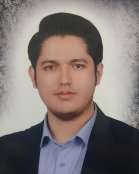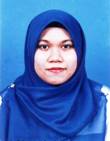Keynote Forum
Mohammad Yousefzadeh
Urmia University School of Medicine IranTitle: Investigation of antiparasitic activity of silver nanoparticles on Leishmania major
Abstract:
Cutaneous leishmaniasis(CL) is that the most typical form disease of the skin caused by a single-celled parasite that's transmitted by the bite of a phlebotomine sand fly. Symptoms usually appear three months to a year after the bite. Nanotechnology is now recognized as a key activating technology (KET) for its various applications in science and medicine. In recent years, the scientific value of NPs within the treatment of leishmaniasis has increased thanks to the development of anti leishmaniasis drugs. during this study, silver biogenic nanoparticles (AgNPs) and amphotericin-bound silver biogenic nanoparticles (AmB-AgNPs) are used.
Biography:
Mohammad has completed his MSc at the age of 28 years from Urmia University in medical parasitology. He is the Research Consultant and control quality manager in several clinical laboratory And he is constantly researching at work and finding the latest techniques for diagnosing diseases. Mohammad believes that participating in this congress will expand intellectual horizons and connect with other researchers.
Speakers
Dr Debashish Ghose
Roland Institute of Pharmaceutical Sciences IndiaTitle: A Paradigm Shift - Modern era of Nanobiosensors for combating Cancers and Pandemics
Abstract:
The earliest tumors/cancers is identified, the higher the probability and mitigation will be done. The treatment protocol follows a severe drawback that a lot of styles of cancers are diagnosed and detected only they reach metastasis at the cellular level. Thus more efficient and specific techniques for the detection and proper clinical management and diagnosis are the requirement of the hour. the appearance of Nanobiosensors has proven to exhibit a promising future for designing and discovering a precise biological analyte by converting the biological entity (such as proteins, DNA, RNA)in the shape of electrical signals which will be efficiently detected and significantly analyzed. the trendy applicability of nano-based biosensors in cancer/ tumor detection and identifying the novel viruses that outburst into pandemics are often a very important segment where molecular and biotechnological sciences have vast exploring potential. These devices and technological advancements might be dedicated and designed to spot emerging cancer biomarkers to work out drug effectiveness at various target sites. Thus the Nanobiosensor technology could provide faster and accurate detection, trusted imaging of cancer/tumor cells, efficient monitoring of angiogenesis and cancer metastasis, and therapeutic effectiveness of anticancer chemotherapy agents. This presentation will briefly explain the present scenario for the first detection of cancer and other viral diseases and therefore the expanding use of varied sorts of biosensors as a diagnostic tool, additionally as some future applications of nano-biosensor technology in decades to return.
Biography:
Dr. Debashish Ghose is a Research Scholar at the Biju Patnaik University of Technology, Rourkela, Odisha. He has 8 years of expertise in the field of academics and research, currently working as Asst. Professor in Department of Pharmaceutics at Roland Institute of Pharmaceutical Sciences, Berhampur ,Odisha. He has contributed many research and review papers in international acclaimed journals based on bioavailability and solubility enhancement techniques with assisted QbD approach.
Gangaraju Gedda
Vishnu Institute of Technology IndiaTitle: Carbon dots assisted laser desorption/ionization mass spectrometry for sensing of small-molecules
Abstract:
Matrix-assisted laser desorption/ionization time-of-flight mass spectrometry (MALDI-TOF MS) may be a rapid analytical tool for the sensing of small molecules. In MALDI- TOF MS, the matrix plays key functions and acts as energy mediator for absorbing and transferring the laser energy to analytes for effective ionization and desorption. α-Cyano-4-hydroxycinnamic acid (CHCA), sinapic acid (SA) and a pair of,5-dihydroxy carboxylic acid (DHB) are commonly used matrices. However, MALDI-TOF MS is difficult to research small mass compounds (less than 500 M.Wt) because of generating sizable amount of fragment or clustering signals from the organic matrices, which severely interfering the analyte peaks. Additionally, non-homogeneous co-crystallization of matrix with sample and sweet spot effect are major drawbacks resulting in poor reproducibility. Nanoparticles assisted laser desorption/ionization (NALDI-TOF MS) mass spectrometry has been intensively used. Many nano materials are used including CDs, CdSe, Pt, HgTe, ZnO, etc. Various quite carbon-based materials like graphene and graphene oxide and nanotube have exhibited their capacity as a perfect matrix for the detection of important analytes using MALDI-TOF-MS. Among of these nano materials matrices, CDs gained significate attention thanks to their unique physical and chemical properties. Several instances where the flexibility of the C-dots are proved as an efficient matrix for the detection and quantification of biological analytes. Here, we discussed about synthesis, properties and role of CDs in
Biography:
Dr. Gangaraju Gedda currently is an Associate Professor in Vishnu Institute of Technology, India (2020-till now). He received his MS degree in JNT University, India in 2009 and Ph.D. degree from the National Sun Yat Sen University, Taiwan in 2015. Followed by Postdoctoral appointments at National Taiwan University of Science and Technology, Taiwan. He went back to India and worked as an Assistant Professor in GITAM University (2017–2020). He also serves as the reviewer in more than 5 journals and also serves as a resource person in several nitration conferences in India, Taiwan and USA. To date, he has 25 publications with 661 citation and h- index-15, and 2 book chapters.
Fatin Hamimi Mustafa
Universiti Sains Malaysia MalaysiaTitle: Near infrared spectroscopy to monitor disease-related to adipose fat underneath skin.
Abstract:
The amount of adipose fat in neonates indicates their nutritional status. Low body fat has been shown that the neonates experienced undernutrition. Undernutrition can cause sudden death and morbidity in neonates’ later life, which occurs mostly in the developing countries. The gold standard body fat measurement, which is air-displacement-plethysmography (ADP) is very expensive and cannot be afforded by low-middle income settings. In this project, near infrared spectroscopy (NIRS) is used to measure the amount of adipose fat underneath skin. The first stage utilising Monte Carlo simulation method to determine optimal wavelengths and to solve a major limitation of NIRS which is high absorption due to water in the skin. The finding showed that the optimal wavelengths ranges were from 890 to 940 nm and from 1010 to 1100 nm. Next was optimization of near infrared source-detector configuration by ex-vivo phantom experiment using beef fat. The results demonstrated that 45-degree source-detector arrangement obtained higher sensitivity compared to 90-degree. In clinical study, 52 neonates were selected for NIRS measurements on tight skin with the used of the optimal wavelengths and the best source-detector arrangement as obtained above. The similar samples (neonates) also were measured using the ADP. From the clinical measurements, a body fat equation model of NIRS was developed and the correlation between NIRS and ADP exhibited above 0.85. The high correlation with the gold standard method showed the potential of NIRS to be a low-cost device for monitoring undernutrition in neonates.
Biography:
Fatin Hamimi Mustafa has completed her PhD in optical biosensor from the University of Sydney, Australia in 2017 with a scholarship from the Australian government. Her Master’s Degree and Bachelor’s Degree are both from Universiti Teknologi Malaysia in Electrical and Electronics Engineering. She is now a senior lecturer at Institute for Research in Molecular Medicine (INFORMM), Universiti Sains Malaysia Health Campus, Malaysia. She has published more than 14 papers in reputed journals and has been awarded national, international as well as industry grants.





